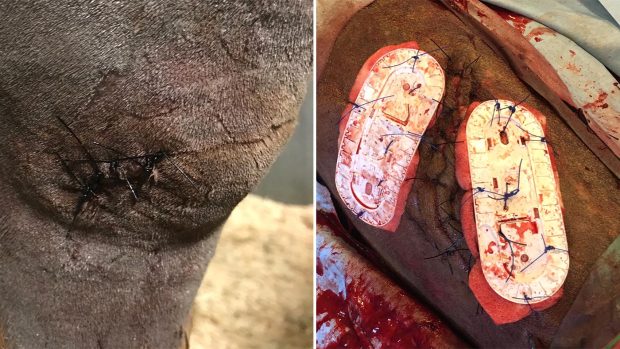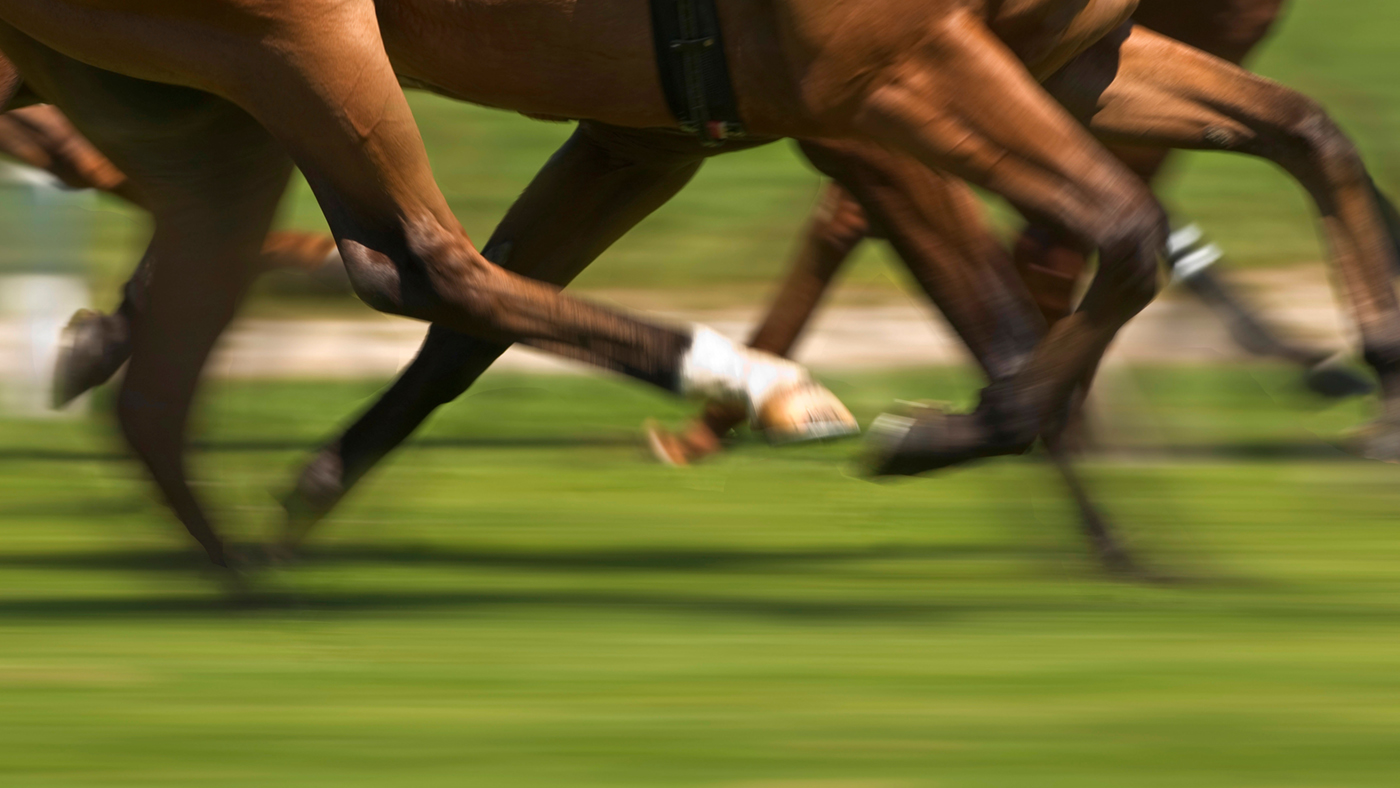Out hunting, kicks are par for the course and if they involve the fleshy part of the horse are likely to be of little significance.
However, if there is an open, deep wound or the injury is near a joint, you must seek veterinary guidance, as antibiotics will be essential.
If there is no obvious open wound to the leg and the horse remains lame the next day, a precautionary X-ray may be necessary.
Dealing with fractures
Fractures are rare out hunting. A fracture does not mean your horse has to be put down. It may just be a crack in the bone which, although causing severe lameness, will heal with adequate box rest.
If the hindleg hits a hunt fence and your horse is hopping on three legs with a tender stifle, beware ofa damaged patella (knee-cap). If in any doubt, contact your vet, who may advise an X-ray.
Stake damage
Stake wounds are more common and often involve the brisket and groin. Such wounds must be flushed out thoroughly in the manner already described ¨ do not be afraid to use a hosepipe initially.
Because these wounds often involve extensive damage to tissues under the skin, air is sucked in and the horse may take on the appearance of a Michelin man, with a crackling feel under theskin.
Do not despair – this air soon disperses if your horse is box rested and the wound is sutured, commonly with drains inserted. Penrose drains resemble ribbon-like tapeworms and allow excess fluid to track down them to the outside.
Antibiotics, in such cases, are essential and fairly expensive and special drugs may be needed to fight the type of anaerobic bacteria which prosper in deep injured tissues.
It is essential in such injuries to make sure no foreign material is still present. This is commonly wood, which is not visible on X-rays.
Blackthorn is a foreign body particularly attracted to the legs of a horse attempting to clear a hedge. If a puncture wound in the cannon area or on the knee persists in discharging, suspect a blackthorn and if vigorous poulticing does not produce the desired result, your vet may have to investigate the wound with forceps.
Taking the strain
If your horse goes lame in front and there is localised heat, pain and swelling at the back of the leg, between the knee and the fetlock, suspect a strained tendon or ligament. It may turn out not to be, but you cannot play too safe on this one.
Initial cold hosing and ice-packing is essential and, as such luxurious commodities are not often available to us on the hunting field, it is worth carrying a special “cool pack” with you. These packs are bandaged on to the affected limb and are magically activated by squeezing. Apply a well-padded pressure bandage and keep your horse in a box until your vet can examine it.



